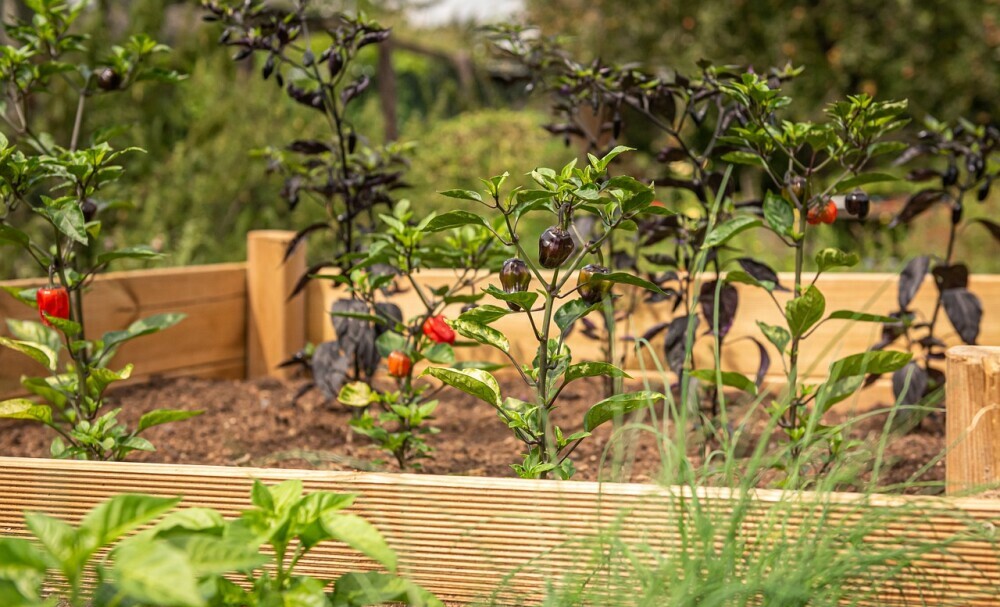You may have heard about no-dig farming and its growing presence in discussions about sustainable agriculture. At its core, no-dig farming is a method that forgoes the traditional practice of tilling the soil before planting crops. Instead, there’s a focus on disturbing the soil as little as possible, nurturing it through natural processes.
I’m often asked how no-dig farming is different from conventional methods. Traditional farming typically involves turning over the soil to aerate it, control weeds, and prepare a seedbed. While effective in the short term, this practice can disrupt the delicate soil ecosystem and lead to long-term issues like erosion and loss of nutrients.
No-dig farming, however, treats the soil as a living organism. The approach fosters a rich haven for microorganisms, worms, and beneficial insects. This creates a self-sustaining environment that supports plant growth. It ties in with a broader understanding of how crucial soil health is to every aspect of the environment around us.
Why No-Dig Farming Matters: Benefits for the Soil and Environment
I often find that the well-being of our planet hinges on the health of the soil. It’s the foundation of entire ecosystems, and no-dig farming stands out as a guardian of this precious resource. Unlike traditional farming methods that involve turning over the soil, no-dig farming practices maintain the soil’s intricate structure. This method is a game changer for soil conservation.
Picture your garden as a bustling city under the ground. In no-dig farming, you’re choosing not to disturb the soil’s infrastructure, allowing the underground community of organisms to thrive. This has a cascade of benefits: the soil retains its strength, is less prone to erosion, and the organic material within it decomposes naturally, enriching it further.

But the merits of no-dig farming extend beyond just soil health. Biodiversity blooms as the undisturbed land becomes a sanctuary for everything from earthworms to insects, birds, and even small mammals. The multitude of life represents a robust, resilient system capable of warding off disease and supporting plant growth.
Channeling my experiences and observations from various gardening practices, it’s clear that no-dig farming is also a powerful ally against climate change. By not tilling the soil, carbon is sequestered beneath the surface rather than being released into the atmosphere. It is a small but significant step towards reducing our collective carbon footprint.
The ripple effect of adopting no-dig practices is vast. Local waterways benefit from less runoff and sedimentation, air quality improves due to reduced dust, and a more vibrant soil leads to healthier, more nutritious crops. Ultimately, no-dig farming nurtures the soil so it can sustain us long-term.
How to Implement No-Dig Farming in Your Garden
If you’re looking to take up no-dig farming, I’ve got a practical guide to get you started. It’s a straightforward approach that emphasises soil health and requires fewer tools and less labor than traditional methods. Here’s what you’ll need to begin:
The basic principle of no-dig farming is to avoid disturbing the soil. The goal is to layer organic materials, like compost and mulch, on top of your garden beds. This creates a fertile environment for plants to thrive. I recommend starting small to manage your garden effectively and to observe the results closely.
First, select a location. Your no-dig garden should be in a spot that gets ample sunlight and is relatively flat. Adequate drainage is critical, so consider raised beds if the natural drainage of your area is poor.
Next, source your materials. You’ll need a generous amount of organic compost, which will be your primary soil amendment. You’ll need mulch materials too, like straw, leaves, or wood chips. These will retain moisture and suppress weeds.
Now, lay down a thick layer of cardboard or newspaper over the grass or soil where your garden will be. This kills off the grass and weeds below by blocking sunlight, all without any digging. Wet this layer to help it break down and to encourage earthworm activity. Then apply a thick layer of compost on top.
Add a final layer of mulch. It’s not just about dropping a few leaves on the surface; you’re aiming for a layer that’s at least a few inches deep. This layer protects your soil from the elements and helps it retain all the moisture it needs.
Maintenance is straightforward. Each planting season, you’ll simply add more compost and mulch to replenish nutrients. No need for tilling or significant soil disturbance.
Over time, you’ll see the soil structure improve, witness an increase in beneficial insects and organisms, and observe how the plants in your garden flourish. This is a testament to the effectiveness of no-dig gardening and serves as a prelude to the diverse and impactful stories of success I’ll share in the next section.
No-Dig Farming Success Stories: Insights from Practitioners
I’ve seen firsthand how no-dig techniques can transform barren plots into thriving ecosystems. In this section, I’ll share real-world examples that illustrate the impact of no-dig methods.
Take the case of a farm in Devon, England. Faced with poor soil quality, the owner adopted no-dig practices. Over a few years, the soil’s health improved dramatically, leading to abundant harvests. The key? Consistent application of organic mulch and a hands-off approach to soil management.
In suburban backyards, no-dig gardens are becoming showpieces for sustainability. A Kentucky homesteader, with little previous gardening experience, built raised no-dig beds. Now, these beds yield more than enough to feed their family, with surplus to share with neighbors, proving you don’t need acres of land for effective farming.
But it’s not just individual stories. Research institutions are taking note, conducting long-term studies that verify the efficacy of no-dig farming. One study showed a significant increase in soil carbon sequestration, reinforcing the method’s role in climate change mitigation.
These examples barely scratch the surface. Across diverse climates and soil types, no-dig farming is helping gardeners achieve better soil, higher yields, and more robust plant health. They’re not just surviving; they’re thriving by working with nature instead of against it.
Challenges and Solutions in No-Dig Farming
Every approach has its hurdles, and no-dig farming is no exception. While the method is elegantly simple, it’s not without challenges. Gardeners often encounter weed invasions and question the adequacy of nutrients when they first transition to no-dig methods. However, these obstacles are far from insurmountable.
One of the main concerns among new adopters is weed management. Without tilling to disrupt weed growth, it seems these opportunistic plants might triumph. Yet, this is where the strength of no-dig really shines through. Thick mulching, thorough ground cover, and attentive spot weeding can keep these intruders at bay. Moreover, as soil health improves, the cultivated plants become more robust and capable of outcompeting weeds.
Nutrient availability is another frequent topic. Critics suggest that without tilling to incorporate compost and fertilisers, plants may suffer. In practice, though, the layered approach of no-dig beds allows for a slow-release of nutrients as organic matter decomposes naturally. The key is to use quality compost and apply it at the right time.
Admittedly, shifting to no-dig farming can require a mindset change. It calls for patience and trust in nature’s processes. I’d urge anyone interested to reach out to local no-dig communities for support and to learn from their collective experiences.
In conclusion, the transition to no-dig farming certainly presents challenges, but they’re far from insurmountable with the right approach and adjustments. This method offers a promising path forward for sustainable, environmentally friendly agriculture. The long-term benefits to soil health, ecosystem balance, and crop productivity make tackling these initial hurdles well worth the effort. Looking ahead, continued research and sharing of best practices will pave the way for wider adoption and success in no-dig farming endeavours.


